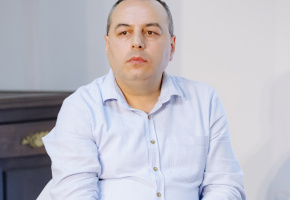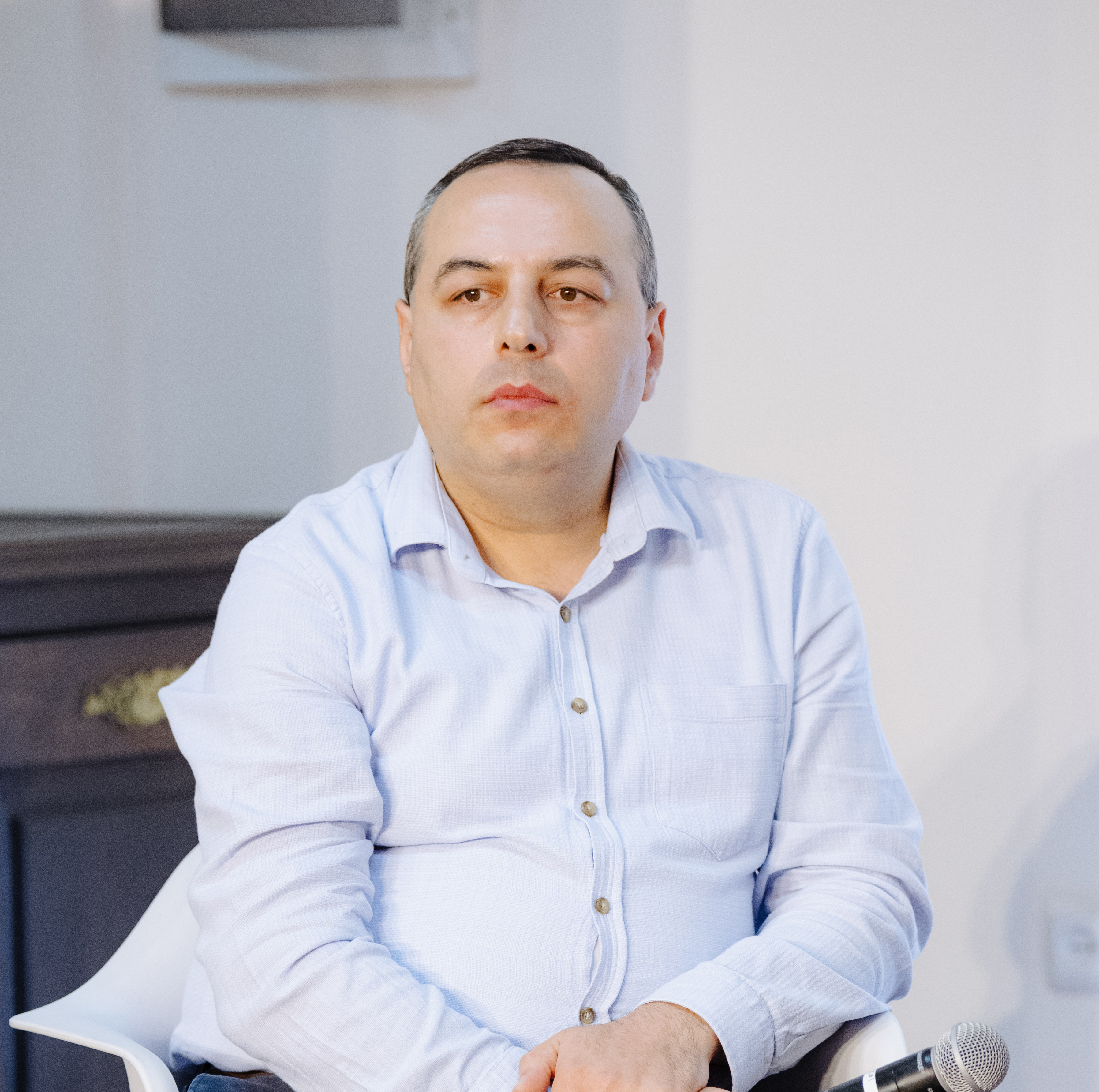July 18, 2025 | 14:38
Partners
Library
Society
Language and thought: discussions on the development of Armenian at YSU
How can one think in Armenian? What are the current challenges facing the development of the language? These and other urgent issues related to the field were the focus of a panel discussion held during YSU Alumni Forum in the "Language, History, Culture, and Tradition" section. The speakers included Siranush Dvoyan, Chairperson of the Language Committee of Armenia; Gevorg Ter-Gabrielyan, Executive Director of the Eurasia Partnership Foundation and a fiction writer; Hasmik Jivanyan, a lecturer at YSU; and Ani Shahnazaryan, a lecturer at AUA.
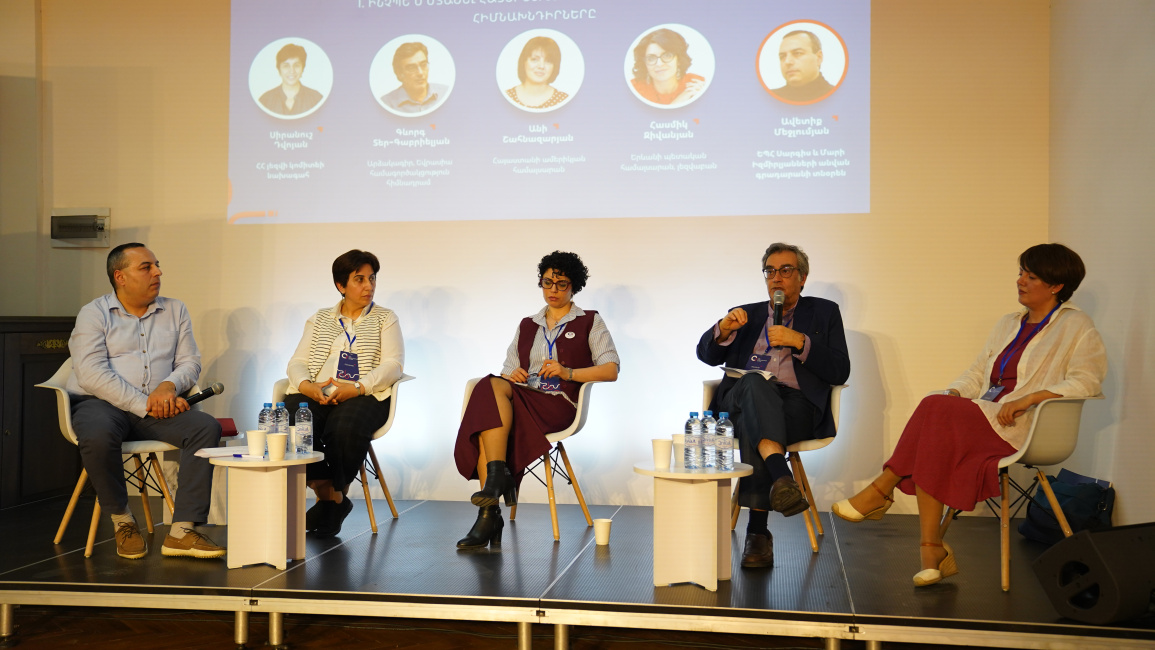
The panel discussion was moderated by Avetik Mejlumyan, Director of Director of YSU Library named after Sarkis and Marie Izmirlian, who framed the conversation around pressing contemporary issues such as the relationship between literary and colloquial Armenian, the intersections of Armenian with digital technologies, the language of contemporary Armenian literature, the priorities of the Language Committee, priority actions in the development of Armenian, and other related concerns.
Literary and Colloquial Armenian
Addressing the connection between language and thought, Hasmik Jivanyan highlighted the growing disconnect between literary and colloquial Armenian. She emphasized the necessity of fostering a correct attitude toward language that does not confine it exclusively to literary and highly formal Armenian.
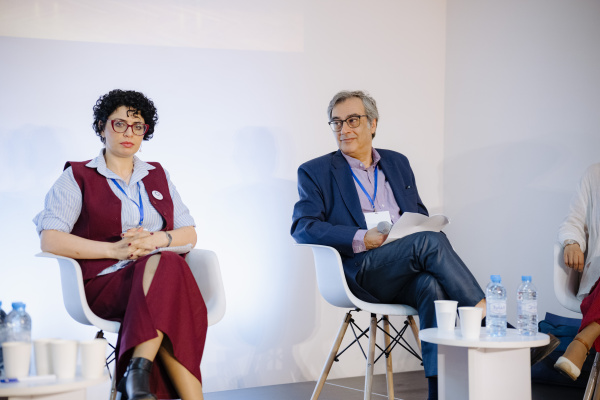
"The greatest issue I have observed in Armenian society is that Armenian has failed to adequately develop the layer that lies between the rigid, literary standard language — burdened by prescriptive rules — and the spontaneous, natural colloquial speech. Many of us feel this problem deeply, as it greatly influences everyday communication by restricting free and natural interactions," Jivanyan explained. According to her, the root cause is the perception of 'language' as synonymous only with literary Armenian, a codified system of norms, rather than a living, flexible linguistic entity that fosters thought and its expression.
She proposed that forming a healthy attitude toward language, valuing the knowledge of foreign languages, not restricting oneself solely to the national language, allowing it to engage with global intellectual currents, and permitting the language to evolve by absorbing influences from other languages and registers are essential. Additionally, avoiding taboos on the language’s development is critical. Summarizing, Jivanyan stated, "When dealing with language, our primary objective is not the language itself but thought. Language is not about language—it is about thought. Language is meant to serve thought."
Armenian and Digital Technologies
What role do digital technologies play in the contemporary development of the Armenian language? Answers to this question are multifaceted. Ani Shahnazaryan provided a clear perspective, noting the emergence of a new scientific discipline in the modern world—digital humanities.
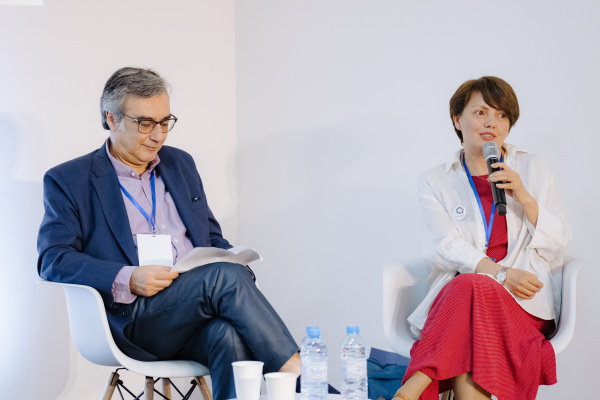
"This discipline integrates digital science, tools, and humanistic thinking. Through digital technologies and methodologies, humanistic knowledge is processed and analyzed, leading to new approaches, methods, and intellectual insights. In literature, we work not just with single texts but with big data, which allows us to process and analyze texts systematically," she explained. Shahnazaryan, who uses cutting-edge digital technologies in her work with ancient manuscripts at the Matenadaran, emphasized how this integration has significantly enhanced the efficiency and ease of her research. She expressed hope that YSU would also establish a specialized laboratory dedicated to advancing this discipline, underscoring the necessity of developing digital knowledge within the humanities.
Contemporary Literature and the Armenian Language
Gevorg Ter-Gabrielyan, Executive Director of the Eurasia Partnership Foundation and a fiction writer, addressed the extent to which today’s literature reflects life through language and the relationship between colloquial speech and contemporary literary language. He identified a divide between written and spoken Armenian that originated at the end of the 19th century and beginning of the 20th century, when literary Armenian became standardized and entrenched. This divide deepened during the Soviet period and continued into the post-Soviet era.
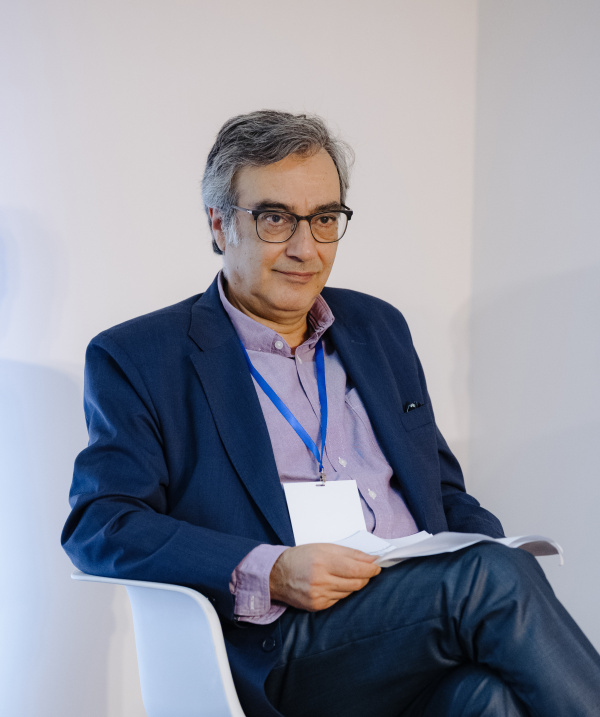
According to the speaker, during the Soviet era, written Armenian, closely linked to the official language, incorporated elements of falsity and hypocrisy. "Ideologically, both media-produced and literary texts predominantly became hypocritical, superficial, and deceitful, a result of Stalinist repression. Enormous volumes of literary works were produced at that time, yet they are now largely forgotten, as they were created under the constraints of Socialist Realism. This divide created a bifurcated reality—hypocritical, imposed written language," the author stressed.
Reflecting on the post-Soviet literary language, he pointed out that the standardized literary Armenian became a pillar of national ideology, continuously fueled by the notion that failing to adhere to this standard would lead to the extinction of the Armenian language, given the country’s small size and ongoing threats. Ter-Gabrielyan grounded his argument with examples from contemporary Armenian literature and identified the divide between literary and colloquial language as a key problem. He concluded, "It is essential to integrate colloquial language into literary Armenian. Literature reflects life. The farther language is from the language of life, the more lifeless it becomes."
Priorities and Actions
Siranush Dvoyan, Chairperson of the Language Committee of the Republic of Armenia, addressed the foremost challenges and priority actions related to the preservation and development of the Armenian language.
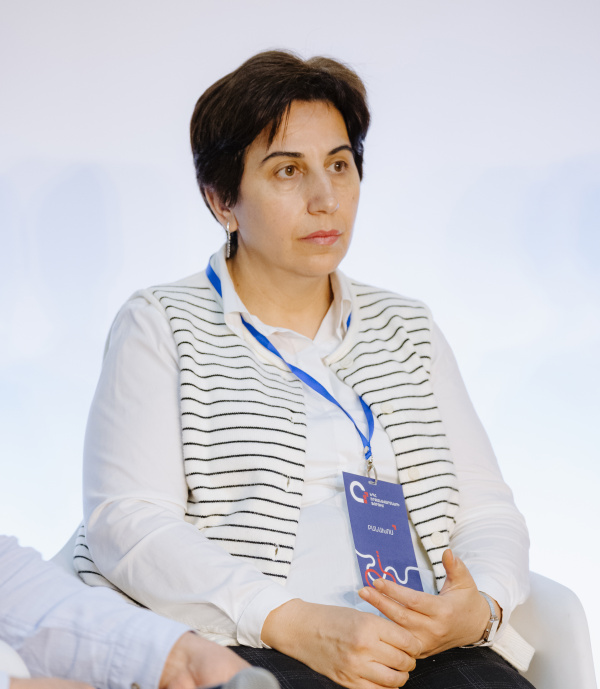
Outlining the history, achievements, and core functions of the Committee, she also shared forthcoming initiatives aimed at resolving the sector’s identified challenges.
"Regrettably, while searching for Armenian-language content online, I observed that Armenian has literally lagged behind in development trends. Although considerable work has been done in recent years, it remains insufficient, particularly because Armenian has not yet entered the phase of technological modernization. Languages develop not only alongside social changes but also in harmony with global technological advancements. Our perceptions, tools, and mindset regarding language have remained stuck in the print era, and we have yet to fully transition to the digital world," emphasized Dvoyan. She added that the Armenian language and society, more broadly, have not completely grasped the characteristic features of a technological society.
The chairperson also noted that various programs are underway aimed at addressing these challenges, including initiatives to advance the technological modernization of the Armenian language through programming-based solutions.
For more details, watch the full panel discussion in the video.
Video
